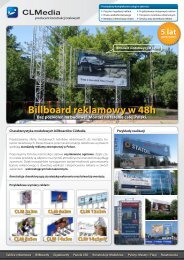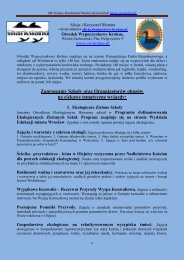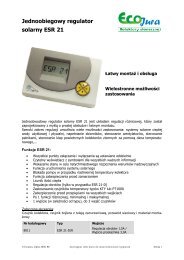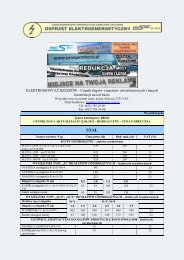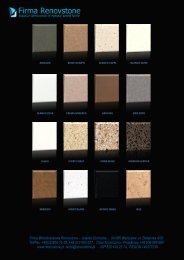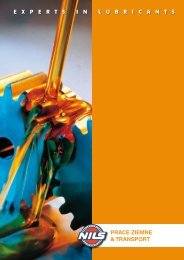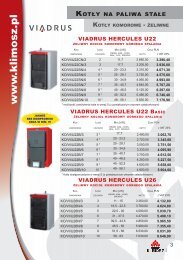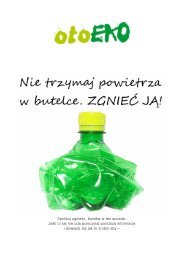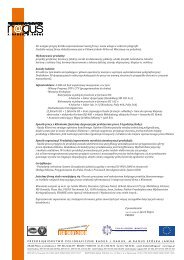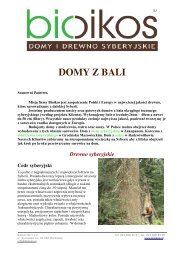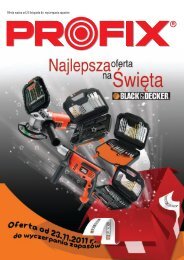Single-line Systems for Commercial Vehicles
Single-line Systems for Commercial Vehicles
Single-line Systems for Commercial Vehicles
Create successful ePaper yourself
Turn your PDF publications into a flip-book with our unique Google optimized e-Paper software.
<strong>Single</strong>-<strong>line</strong> <strong>Systems</strong> <strong>for</strong> <strong>Commercial</strong> <strong>Vehicles</strong> <strong>for</strong> grease, NLGI grades 000, 00<br />
f) Installation<br />
(Detailed installation instructions are<br />
available on request.)<br />
This in<strong>for</strong>mation is supposed to be a<br />
guide <strong>line</strong> and aid <strong>for</strong> the fitter. It will<br />
enable him to install the equipment<br />
on vehicles even if there are no tubing<br />
layouts available, or only incomplete ones.<br />
For the prevalent, standard types of<br />
commercial vehicles, we have prepared<br />
tubing layouts that show how the installations<br />
are supposed to be done.<br />
If required, these layouts will be mailed<br />
free of charge.<br />
Additional superstructures and special<br />
vehicles can be outfitted on the basis of<br />
these layouts.<br />
The preassembled VKSO distributors <strong>for</strong><br />
standard systems are supplied with a<br />
preset metered quantity, but they can be<br />
changed to another quantity of lubricant<br />
if necessary.<br />
Install the VKSO distributors at suitable<br />
locations on the vehicle and connect to<br />
the tubing.<br />
Max. length of the secondary <strong>line</strong>s is 6 m<br />
(connection: distributor – lubrication point).<br />
Tighten the socket unions, but do not<br />
overtighten (maximum of 1 1 /2 turns).<br />
The tapered sleeves and tubing are<br />
slightly de<strong>for</strong>med when tightened, thus<br />
offering no resistance as a fixing bolt<br />
would when tightened.<br />
Attention must be paid to the following<br />
when installing the secondary <strong>line</strong>s:<br />
– Steering lock angle, sagging, chafing<br />
spots.<br />
– Keep away from heat sources.<br />
Install the pump and control unit at a<br />
suitable place.<br />
Connect hoses and make electrical<br />
connections.<br />
Some installation hints:<br />
– Use the existing holes drilled in the<br />
chassis and in other vehicle parts <strong>for</strong><br />
the installation.<br />
– Span large boreholes with body washers.<br />
– Lay 4 x 0.85 plastic tubing (as per<br />
WVN716, flexible) between distributors<br />
and lubrication points.<br />
– Use 734...-K hose <strong>line</strong>s to connect<br />
nonstationary lubrication points and<br />
lubrication points that are subject to<br />
heavy mechanical stress and strain.<br />
– The compressed air <strong>for</strong> the PEF-90<br />
pneumatically actuated pump must<br />
be taken from a <strong>line</strong> <strong>for</strong> auxiliary loads.<br />
The regulations of the german TÜV<br />
(Technical Control Board) must be<br />
observed.<br />
– The pertinent Hazardous Goods Road<br />
Ordinance Germany (GGVS) must be<br />
observed in the case of tank trucks<br />
and other vehicles carrying hazardous<br />
goods.<br />
The following pump unit can be used:<br />
electrically operated gear pump units<br />
KFU2-40, KFU6-20 in conjunction with<br />
cable harness 997-000-374; compact<br />
units KFB(S) in conjunction with cable<br />
harness 997-000-630 or 997-000-650.<br />
Furthermore, the pressure switch <strong>line</strong><br />
must likewise be laid in corrugated tubing<br />
2. Operation and maintenance<br />
In the case of automatically controlled<br />
systems, with the exception of KFB(S)<br />
compact units, the indicator light goes<br />
on <strong>for</strong> about 3 seconds every time the<br />
ignition is switched on. (See 3.a <strong>for</strong> malfunctions<br />
of indicator light.)<br />
For the most part, maintenance is limited<br />
to topping up with clean lubricantwhen<br />
necessary.<br />
All tube connections should be checked <strong>for</strong><br />
a tight fit when the vehicle is inspected.<br />
Replace torn or worn hose <strong>line</strong>s after<br />
eliminating the cause of the problem,<br />
and trigger test lubrication. Actuate automatic<br />
systems by hand and observe the<br />
indicator light.<br />
The main <strong>line</strong> (connection: pump –<br />
distributor) is monitored by a pressure<br />
switch that reports the build-up of<br />
pressure. Exception: KFBS and KFUS<br />
units. If the indicator light does not light<br />
up, or if it burns constantly in the case<br />
of automatic systems, this means the<br />
pressure has failed to build up.<br />
Select a smaller metered quantity <strong>for</strong><br />
highly overlubricated points and a higher<br />
quantity <strong>for</strong> dry points.<br />
If the entire system is overlubricated or<br />
underlubricated, there can be malfunction:<br />
in this case, follow the instructions in 3.b<br />
or 3.c below.<br />
3. Malfunctions and their elimination<br />
a) Fault indication by indicator light.<br />
The indicator light does not go out about<br />
3 seconds after the ignition is switched<br />
on or the motor has been started.<br />
Check lubricant level in the reservoir;<br />
top up lubricant if necessary and bleed the<br />
system.<br />
In the case of electrically operated gear<br />
pumps, loosen the screw union of the<br />
main <strong>line</strong> while the pump is running.<br />
There must be a continuous discharge of<br />
lubricant.<br />
In the case of pneumatically operated<br />
systems:<br />
Check the compressed air supply.<br />
Minimum pressure is 6 bars.<br />
Check pump function.<br />
The piston stroke must be heard or felt<br />
when compressed air is applied.<br />
Check pressure in main <strong>line</strong>.<br />
Loosen the lubrication-point connection<br />
and check whether the distributor is<br />
delivering lubricant. If it is, the fault must<br />
be looked <strong>for</strong> in the pressure switch,<br />
electrical wiring or control unit.<br />
10 1-9420-EN



